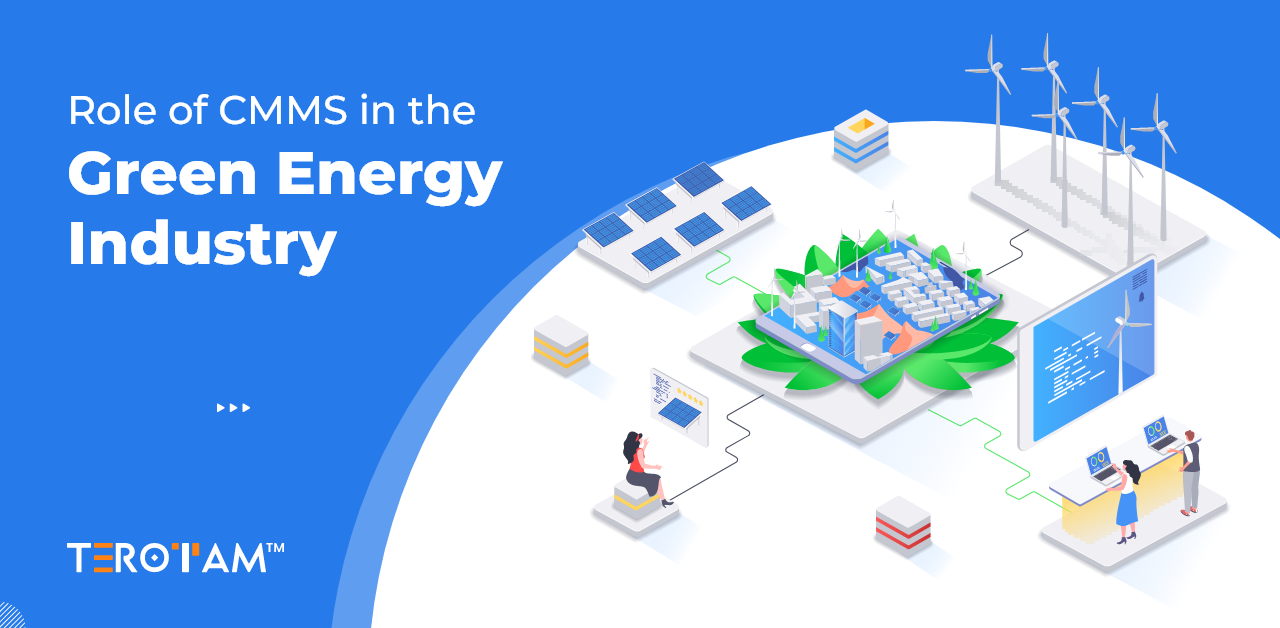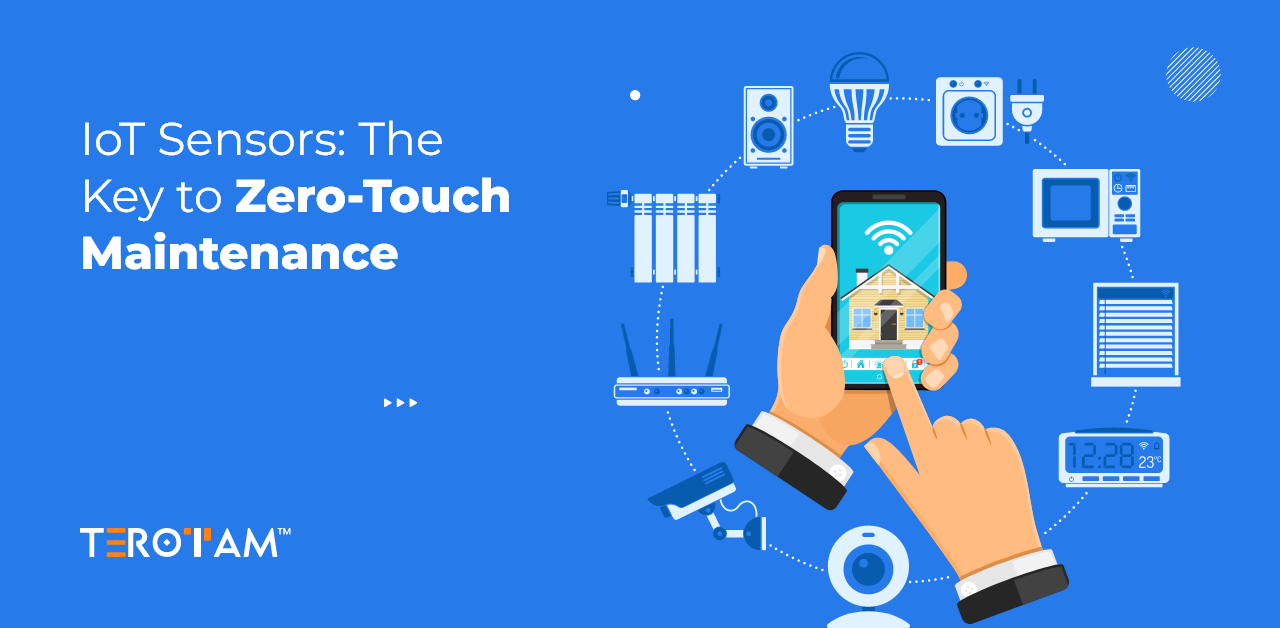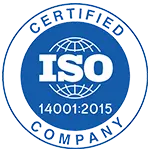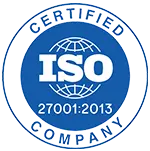The transition to green energy has rapidly accelerated in recent years, with solar farms, wind parks, hydroelectric systems, and biogas plants playing a central role in shaping the future of sustainable power generation. However, while the spotlight often shines on energy output and innovation, the operational backbone of these facilities—maintenance management—is equally important. Efficient upkeep directly influences equipment longevity, plant uptime, compliance, and return on investment.
This is where Computerized Maintenance Management Systems (CMMS) step in. Designed to streamline maintenance workflows and asset management, CMMS platforms have become a critical tool in the green energy sector, ensuring assets run efficiently, safely, and sustainably.
In this article, we’ll explore how CMMS solutions contribute to improved maintenance strategies, optimized performance, regulatory compliance, and operational visibility in renewable energy environments.
Maintenance Challenges in Green Energy Operations
Maintaining green energy infrastructure presents a unique set of challenges. These plants often operate in remote, weather-exposed environments, rely on high-capital equipment, and must comply with strict environmental and safety regulations. Manual or outdated maintenance approaches can lead to unscheduled downtimes, missed inspections, or inefficient resource use.
Common hurdles include:
- Geographically scattered assets such as wind turbines and solar panels, often located in hard-to-reach areas.
- Complex equipment structures that require specialized servicing and predictive maintenance.
- Strict compliance norms under renewable energy regulations and environmental guidelines.
- Data silos and paper-based systems that delay decision-making and risk asset failure.
CMMS helps overcome these challenges by digitizing the maintenance ecosystem and centralizing all operational data.
How Does CMMS Support the Green Energy Industry?
A modern CMMS platform brings structure and automation to routine and strategic maintenance tasks. In the context of green energy, where efficiency and uptime are non-negotiable, CMMS provides the infrastructure for proactive, consistent, and scalable maintenance.
1. Centralized asset registry and hierarchy
Green energy plants have hundreds to thousands of interconnected components. A CMMS builds a complete digital asset registry where every turbine, solar inverter, panel, transformer, gearbox, or sensor is tracked, along with its specifications, history, and location.
- Improves traceability across wind farms or solar arrays
- Helps structure preventive maintenance schedules based on equipment types and usage
- Enables hierarchical management of systems (e.g., wind turbine > gearbox > bearing assembly)
2. Preventive and predictive maintenance automation
Downtime in green energy facilities can lead to massive energy losses and missed grid supply targets. CMMS helps automate inspection cycles and service routines using meter-based, calendar-based, or condition-based triggers.
- Automates routine PMs like blade inspection, inverter cleaning, and lubrication
- Integrates with IoT and SCADA systems to trigger maintenance based on performance anomalies
- Minimizes emergency repairs and increases asset availability
3. Remote work order management
Technicians in renewable energy often work at distributed locations—offshore wind farms, remote solar fields, or hydroelectric dams. A cloud-based CMMS allows for mobile-first work order handling, ensuring real-time updates and paperless execution.
- Field teams receive tasks via mobile devices with digital checklists and safety protocols
- Reduces communication delays and administrative work
- Tracks execution with time-stamps, technician notes, and photos
4. Spare parts and inventory optimization
Spares for green energy equipment—such as turbine blades, IGBTs, PV modules, or cooling components—are expensive and must be stored smartly. CMMS integrates inventory management with service schedules to forecast needs and prevent stockouts.
- Maps critical spares to respective assets
- Tracks part consumption trends and reorder points
- Reduces deadstock by aligning procurement with real-time demand
5. Environmental and regulatory compliance
Green energy companies must document maintenance activities for audit trails, ISO certifications, and industry-specific regulations like IEC 61400 (wind) or UL 1741 (solar inverters). CMMS provides compliance workflows and auto-generated reports.
- Maintains digital logs of inspections, certifications, and servicing
- Ensures EHS (Environment, Health & Safety) tasks are completed on time
- Supports internal audits and third-party assessments
6. Lifecycle cost and performance analysis
With built-in analytics dashboards, CMMS platforms allow operators to evaluate how assets are performing across time, identify high-cost components, and estimate lifecycle value. This helps in strategic planning for replacement and upgrades.
- Monitors Mean Time Between Failures (MTBF) and Mean Time To Repair (MTTR)
- Tracks total maintenance cost per asset
- Flags underperforming equipment based on historical trends
Use cases across renewable energy segments
Every renewable energy segment presents a unique operational environment with specific maintenance needs. Whether it’s managing high-speed mechanical components in wind farms or safeguarding delicate electronics in solar power systems, CMMS platforms adapt to each scenario with customized workflows, asset hierarchies, and predictive models. Let’s break down how different green energy sectors benefit from CMMS integration:
Wind energy
Wind turbines are large, complex systems often situated in remote or offshore areas. Maintenance involves both mechanical and electrical components, each critical to turbine performance.
- Gearbox and bearing maintenance: CMMS tracks vibration levels, oil analysis results, and thermal deviations to schedule condition-based servicing of gearboxes—often the most failure-prone and expensive component.
- Blade inspection cycles: Automatically schedules drone or manual inspections for detecting surface erosion, lightning strikes, or cracks. Integrates images into asset history for better lifecycle tracking.
- Tower and nacelle inspections: Maintains checklists for bolt torqueing, corrosion checks, and structural integrity assessments. CMMS assigns tasks based on technician certifications and safety protocols.
- Offshore access logistics: Coordinates technician dispatches, vessel movements, and maintenance windows in a central calendar to avoid downtime due to weather or availability conflicts.
Solar energy
Solar power systems seem simple on the surface but involve multiple components—panels, inverters, junction boxes, trackers—that need consistent care to maintain output efficiency.
- Panel cleaning schedules: CMMS automates washing cycles based on dust accumulation rates, rainfall data, or energy yield drops, optimizing water and manpower usage.
- Inverter and combiner box maintenance: Tracks inverter alarms, fan replacements, and thermal shutdowns. CMMS logs inverter uptime and triggers inspections before failures occur.
- Tracker system upkeep: Monitors maintenance intervals for single-axis or dual-axis solar trackers. CMMS integrates fault alerts from tracker controllers for proactive response.
- Soiling and shading analytics: CMMS correlates panel output data with scheduled inspections to identify issues caused by bird droppings, nearby vegetation, or structural obstructions.
Hydropower plants
Hydroelectric facilities, whether large dams or run-of-the-river systems, deal with both civil and electro-mechanical maintenance tasks that must be managed with high precision.
- Turbine and generator maintenance: Tracks operating hours and vibration trends to schedule overhauls, bearing lubrication, and rotor inspections.
- Gate and spillway servicing: CMMS schedules hydraulic system checks, gate seal inspections, and actuator tests to prevent failure during flood control operations.
- Silt and debris management: Coordinates cleaning of trash racks and desilting chambers with downstream flow levels and grid demand.
- Penstock inspections: Maintains inspection records of welds, supports, and protective coatings. CMMS also alerts when inspection intervals are due based on pressure readings and flow anomalies.
Biogas and biomass energy
These systems rely on consistent organic feedstock processing and biological reactions, which are highly sensitive to contamination, wear, and environmental factors.
- Feeding system calibration: CMMS sets schedules for screw conveyor inspections, auger servicing, and calibration of flow meters to ensure accurate input levels.
- Digester maintenance: Tracks temperature, pH, and gas output metrics, integrating with sensors to automate alerts for biological process anomalies or clogs.
- Pump and agitator servicing: CMMS creates maintenance routines for checking seals, replacing impellers, and flushing sludge build-up in critical movement systems.
- Gas handling equipment: Oversees compressor oil changes, gas scrubber maintenance, and flame arrestor inspections—critical to safety and performance.
Hybrid and microgrid systems
As hybrid renewable systems become more common—combining solar, wind, diesel generators, and storage—the need for cross-technology maintenance tracking becomes even more complex.
- Battery management: CMMS tracks state of charge, thermal events, and cycle counts for Li-ion or lead-acid storage banks, generating maintenance flags as batteries age.
- Energy conversion units: Inverters, rectifiers, and transformers require multi-discipline inspections. CMMS logs thermal scans, harmonic distortion data, and event logs for failure analysis.
- Integrated controls and SCADA support: CMMS integrates with EMS/SCADA to automate diagnostics, trigger condition-based work orders, and document resolution steps.
This deeper level of CMMS use ensures that no matter the type of renewable energy system, maintenance isn’t a reactive afterthought—it’s a data-driven, planned, and repeatable process that keeps operations running at maximum efficiency while lowering lifecycle costs.
Why an Integrated CMMS Is the Smartest Choice
Green energy operations demand coordination across multiple moving parts—asset maintenance, inventory, technician deployment, safety checks, and compliance reporting. Relying on separate systems or spreadsheets often results in miscommunication, missed schedules, and slower response times. This scattered approach becomes increasingly inefficient as sites expand or technologies become more complex.
An integrated CMMS brings everything into one connected platform, allowing renewable energy teams to plan, track, and manage tasks with greater clarity and control. Whether it’s automating service intervals, managing spare parts, or staying audit-ready, an integrated system helps align operations with business goals while reducing downtime and resource waste.
- Connects asset performance metrics with historical service data
- Automatically adjusts inventory levels based on task requirements
- Assigns jobs based on technician availability and skill sets
- Keeps compliance checklists and documentation in a central hub
- Integrates with SCADA systems and IoT for condition-triggered maintenance
- Supports mobile access for field teams to update tasks in real-time
- Offers tailored dashboards for maintenance, inventory, and compliance teams
- Speeds up decision-making through unified, real-time reporting
- Enables standardized processes across all renewable energy sites
Conclusion
Green energy operations come with their own set of challenges—scattered assets, strict compliance needs, and equipment that demands constant attention. Managing all of this manually or across disconnected systems can slow you down and drive up costs unnecessarily.
An integrated CMMS brings much-needed structure and visibility to the way maintenance and asset-related tasks are handled. It helps teams stay on top of inspections, plan ahead for part replacements, and respond faster when something needs fixing—without the guesswork. If you’re looking to strengthen your maintenance strategy and make your renewable energy operations more efficient, our team at TeroTAM is ready to assist. Get in touch with us at contact@terotam.com to explore how our CMMS can support your goals.









